Ways To Conserve Energy
How Do You Conserve Energy at Home?
When you leave a room, do you always turn off the lights?
Turning off your lights when not needed helps save electricity and lower utility bills. Even during off-peak hours, turning off lights is one of the easiest ways to reduce your energy bill, extend the life of your light bulbs, and thus require less replacement bulbs in the future.
Check out these essential facts and helpful tips about reducing light usage in your home.
What happens when you turn off the lights?
It can save energy and money
Shutting the lights off when you leave a room can help you save energy. Doing so can also help reduce carbon emissions and greenhouse gas emissions. Additionally, turning off your lights will help lower the consumption of nonrenewable resources.
According to Energy.gov, households spend about 5 percent of their energy on lighting. If you want to save electricity, you can replace five of your home’s most frequently used light fixtures with bulbs with the ENERGY STAR energy savings certification. As a result, Energy.gov says you can save $75 a year.
Are lights sometimes better left on?
Although turning off lights generally saves energy, the answer to whether turning lights on and off wastes more electricity depends on the type of light bulb and the frequency of switching them on and off.
Leaving a light on can sometimes be more economical than turning it off.
For example CFLs and LED lights draw very little electricity to begin with. However, frequent turning on and off can shorten their lifespan. So, if you plan on only stepping out of the room 15 or 20 minutes – leaving the light on can actually be an overall cost savings to you by extending the bulb’s life. But if you are going to be away for several hours, it is always best to turn it off.
See how each lighting fare with energy conservation when turning off the lights:
1. Incandescent light bulbs
It’s best to turn off incandescent bulbs when they are not needed. Unlike other types of lighting, they are the least efficient, releasing most of the energy they use as heat (90%) instead of light (10%). By turning off the lights, a room will also stay cooler, which comes in handy during the summer.
2. Halogen light bulbs
You should also turn off all halogen lights when they are not in use. The halogen bulbs are similar to incandescent lighting and use the same technology, so they also have a lower efficiency than CFLs and LEDs.
3. Compact Fluorescent Lamps (CFLs)
When you use CFLs, saving energy is a little more tricky. When it comes to turning off CFL lights, Energy.gov offers this general rule of thumb: leave them on if you’ll return to a room within 15 minutes; turn them off if you’ll be gone for longer than 15 minutes. Energy.gov reports that this strategy may even extend the life of CFL bulbs, since how often they are switched on and off affects their lifespan.
4. Light Emitting Diodes (LEDs)
LEDs aren’t affected by how many times you turn them on and off. These characteristics make LED bulbs the top choice since they are the most energy-efficient lighting options. Additionally, you can install sensors that automatically turn them on and off and immediately increase their brightness.
How Light Bulbs Work: Cost and Energy Consumption
Let’s compare each lighting option and its cost-effectiveness below:
1. Incandescent Lights
Incandescent bulbs with halogen filaments contain a capsule with gas to increase bulb efficiency. These lights come in a wide range of shapes and colors, and they are dimmable. While they meet the federal minimum energy rating requirements, there are now many more energy-efficient options to choose from.
100-watt bulbs typically consume 876 kWh during a year. Accordingly, running one incandescent bulb for one full year would cost $131.40. In addition, you’ll need to replace that bulb regularly (about 12 times per year).
In most homes, incandescent lighting constitutes about 85% of household illumination. In terms of price, they are the cheapest to buy, but because of their short life spans and inefficiency, they are more expensive to operate and maintain.
Whenever you are not using incandescents, it is recommended that you turn them off. It is estimated that only 10 percent to 15 percent of the electricity consumed by incandescent lights is converted into light. The rest is converted to heat. It is typically more expensive to replace these bulbs than to save energy by not using these lights.
2. Halogen Light Bulb
When compared to traditional incandescent lighting, halogen lights offer moderately high efficiency, good light quality, and long-lasting life.
In most cases, more halogen light bulbs are used than incandescents because they are more efficient. A few factors explain why this is the case– design fashions (placing lights at regular intervals on a wall or ceiling), and lighting directionality. It is thus possible to consume much energy even when a typical halogen bulb uses a maximum of 40 watts of power, compared to 60- or 100-watt incandescents.
3. Compact fluorescent lights (CFLs)
CFLs are the curly version of fluorescent tube lights.
Typical CFLs can pay for themselves in less than 9 months thanks to their lower electricity consumption, this can help you save money each month. CFLs with ENERGY STAR certification use about one-fourth of the energy and last ten times longer than incandescents of comparable brightness. In comparison, CFLs use one-third as much energy as halogen incandescents.
Compared to incandescents of 100 watts, the CFL bulb only requires 25 watts of energy. This would consume just 216 kWh of energy, which would amount to $32.40 per year. Big savings! Most likely you would only replace a CFL twice.
4. Light-emitting diodes (LEDs)
LEDs are semiconductors designed for converting electric current into light. Despite their popularity for traffic and indicator lights, LEDs are today’s highly energy-efficient and advancing technology in the field of lighting and general illumination.
In comparison with incandescents, ENERGY STAR-certified LEDs use 20–25 percent less energy and have a lifespan of 15 to 25 times longer.
Compared to halogen incandescents, LEDs use 25 to 30 percent less energy and last up to 25 times longer.
LED bulbs only use 16 watts to achieve the same brightness as their watt rating printed. In terms of energy usage, that’s 140 kWh per year, or $18.53, and the bulb would last all year long.
More Energy-Saving Tips
Lighting controls are a cost-effective way of saving energy. These include the following:
1. Motion Sensor
Motion sensors are one of the technological innovations that can help you save energy at home.
It’s an ideal lighting control that automatically turns your lights on when they detect movement. Similarly, they will automatically turn your lights off when the activity stops.
If you use lighting controls, you can reduce wasted energy without checking each light individually. You don’t need to worry about turning your lights on and off as you leave the room.
2. Dimmers
Using a dimmer is an ideal way to control the lighting and reduce the wattage and power output, thereby, saving you energy. Aside from that, they are inexpensive to install and provide enough light in your room, office, or any area in your home.
In a nutshell, dimmers control how much voltage flows through switch circuits. A brighter light results from a higher voltage. By lowering the voltage, less power is transferred to the light bulb, which consumes less energy and emits less light.
3. Timers
Smart energy-efficient timers, which are sometimes called timer switches, have multiple uses, but they are typically used for turning off accidentally left “ON” lighting devices.
Timer switches are energy-saving devices that can be plugged between a wall outlet and plug and used to turn lights on at predetermined times, such as before you arrive home from work.
There are also outdoor energy-saving applications for energy-efficient timers. With timer switches, outdoor lighting can be turned on and off at specific times, so lights will only be on when you need them.
Saving on Electricity Also Helps Save the environment and potentially lives.
In addition to lowering your utility bill, turning off the lights can help the environment and can save human lives, according to a recent study by the University of Wisconsin-Madison.
According to Tracey Holloway, a professor at the Nelson Institute for Environmental Studies and senior author of the study, power plants are a significant source of air pollution, including carbon dioxide that affects global climate and human health.
The study tracked air quality, power plant emissions, and human mortality over three summer months when pollutants are at their peak.
They found out that a 12 % increase in energy efficiency during summertime could result in the saving of 475 lives per year in the United States, worth $4 billion. That is equivalent to an average of 2 to 5 lives saved every year in the state of Wisconsin. It has a greater impact in states with larger populations, Holloway said.
What our customers are saying
See why our power customers say we're the best electricity provider in Texas!
I was worried about getting electricity for my home through a prepaid company. I was calling around to see different rates then going through all the hassle of credit checks while dropping points each…
I have been with this company for several years and have been very happy since. Even when I moved, they made my usually stressful situation very easy and carefree. I recommend them to everyone that I…
I have enjoyed the service for 2 years now. In the beginning this service was planned to be temporary but with the service being so effective for me i decided to keep it for the long haul. I’m a happy customer.




